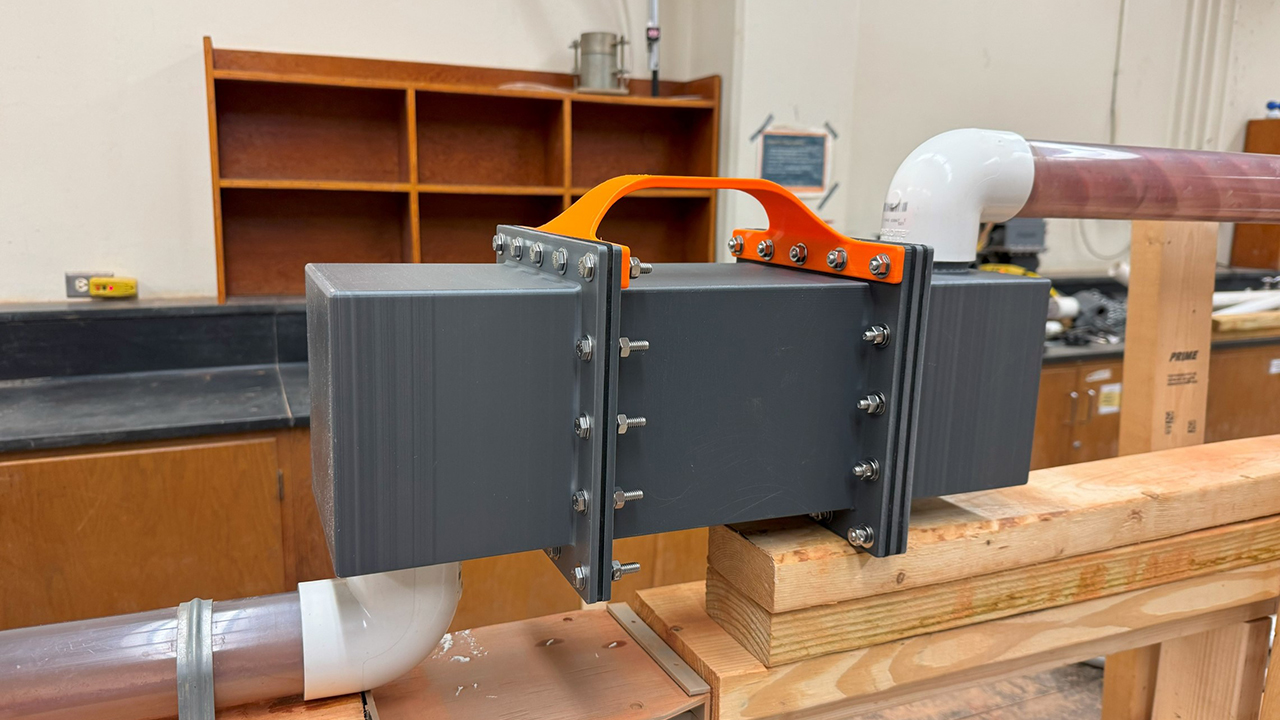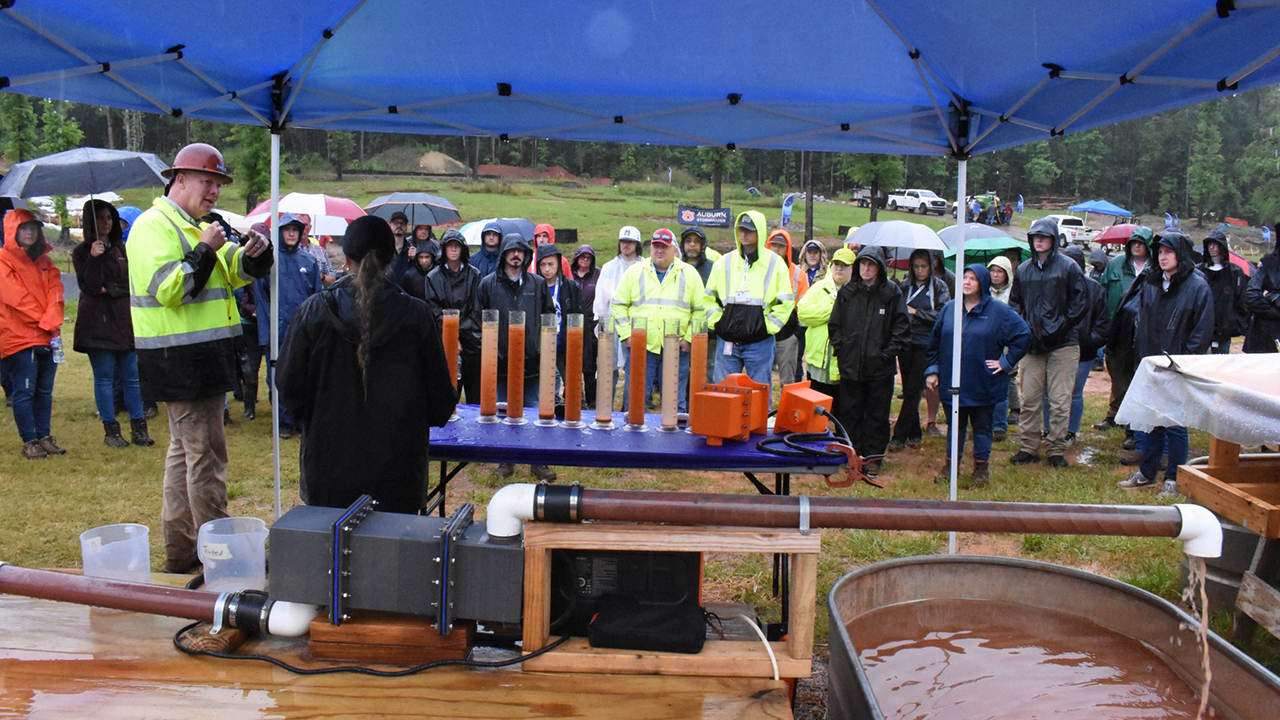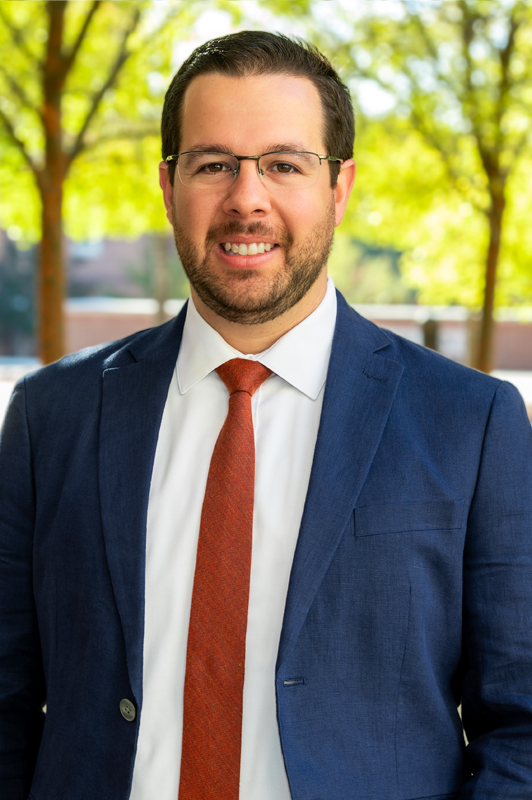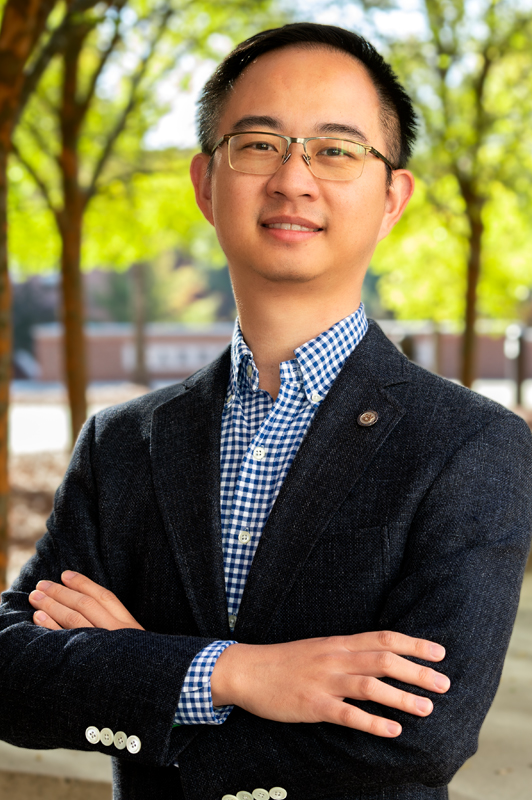Stormwater Research Facility develops portable stormwater treatment device
Published: Aug 19, 2024 8:00 AM
By Dustin Duncan
Rainfall produces stormwater runoff that travels directly into creeks, streams, lakes and oceans, carrying pollutants picked up along the way as water traverses rooftops, roadways, parking lots and construction sites.
The Auburn University Stormwater Research Facility (AU-SRF) is partnering with Fagan Consulting LLC to design a portable, self-contained stormwater treatment device to treat stormwater runoff and protect the waters of Alabama and the U.S.
Fagan Consulting of Prattville is owned by Tracey and Barry Fagan, both ‘94 Auburn civil engineering graduates. Barry Fagan, the project's principal investigator, has worked closely with the Samuel Ginn College of Engineering for more than 20 years. He was involved in developing the stormwater research facility in 2008.
Michael Perez, director of the Stormwater Research Facility and Brasfield & Gorrie associate professor in the Department of Civil and Environmental Engineering, said the project is funded through a Small Business Innovation Research (SBIR) contract with the U.S. Department of Transportation and Innovate Alabama, which is a public-private partnership that fosters new technologies and creates jobs through innovation.
Auburn and Fagan have partnered through Phase I of the SBIR contract to develop a working prototype, nicknamed the “Tiger Shark”, that successfully removes pollutants from stormwater runoff. Fagan and Auburn have recently been awarded a Phase II contract with the U.S. DOT along with another supplemental grant from Innovate Alabama. This phase involves developing a market-ready product within the next two years. As of August, the team has received awards totaling $975,000 to support the project.
Perez said that the prototype developed removed approximately 90% of the stormwater's pollutants, including sediment, nutrients and heavy metals.
“We’re creating something portable that can be taken directly to a job site or installed in urban stormwater infrastructure,” Perez said. “We can route stormwater through our device and treat it as it comes out.”

Perez said the technology within the portable device is called electroflocculation, a process traditionally used in large wastewater treatment plants. Electroflocculation uses electricity and metal plates to release charged ions into the water. These ions electromagnetically bind with soil particles and other contaminants, causing them to coagulate and settle out of suspension.
“The process is widely used in wastewater treatment plants, utilizing large batch systems because of the amount of water to treat and power it takes to run it,” said Shiqiang (Nick) Zou, co-PI and assistant professor in civil and environmental engineering. “However, we’re doing this on a portable device about 18 inches in size.”
Fagan said it’s incredible how Auburn’s work has influenced the state of stormwater management in Alabama and across the U.S.
“It has been exciting to watch Auburn’s work grow from simple testing and improvement of existing best management practices to training hundreds of professionals each year to now developing cutting-edge commercial products. I am proud to be connected to the College of Engineering and the stormwater work happening there,” Fagan said.
Megan Armstrong, a civil and environmental engineering graduate student on Perez’s team, said the device has several real-world applications.
“Construction sites have a lot of soil washing off and running to bodies of water. The device will remove that sediment before it reaches receiving water bodies,” she said. “However, the uses go beyond construction. Departments of transportation, homeowner associations and municipalities could use this device along roadways, parking lots and storm drain gutters to treat stormwater runoff before it flows into creeks and rivers.”

Perez said the regulations on handling stormwater have always fallen to the federal and state governments, but practical solutions and mechanisms haven’t always been available.
“Now, there will be a portable solution powered by a 12-volt battery that can be charged with a solar panel,” he said.
The team is working with Auburn University’s IP Exchange and the New Venture Accelerator in the Raymod J. Harbert College of Business to develop intellectual property and their market strategy.
Media Contact: , dzd0065@auburn.edu, 334-844-2326
Barry Fagan (left), owner of Fagan Consulting of Prattville, poses for a photo with Megan Armstrong, a civil and environmental engineering graduate student (middle), and Michael Perez, director of the Stormwater Research Facility and Brasfield & Gorrie associate professor in the Department of Civil and Environmental Engineering (right), during a poster presentation for their portable, self-contained stormwater treatment device to treat stormwater runoff and protect the waters of Alabama and the U.S.



